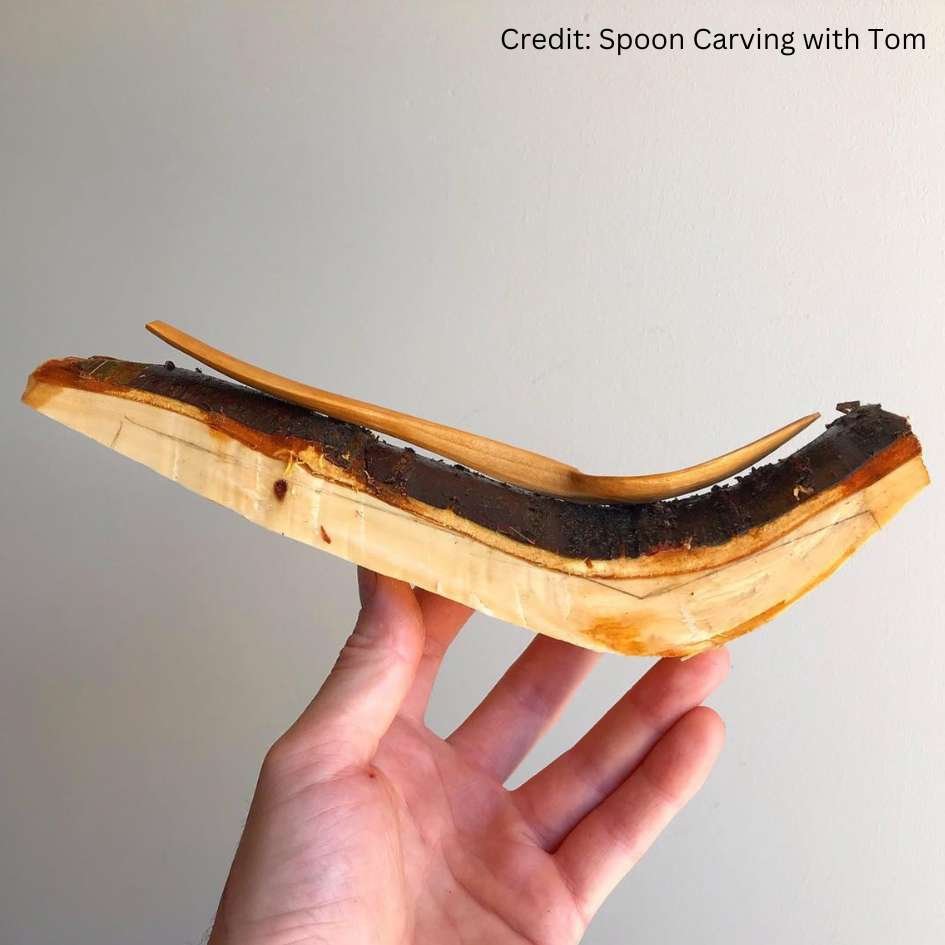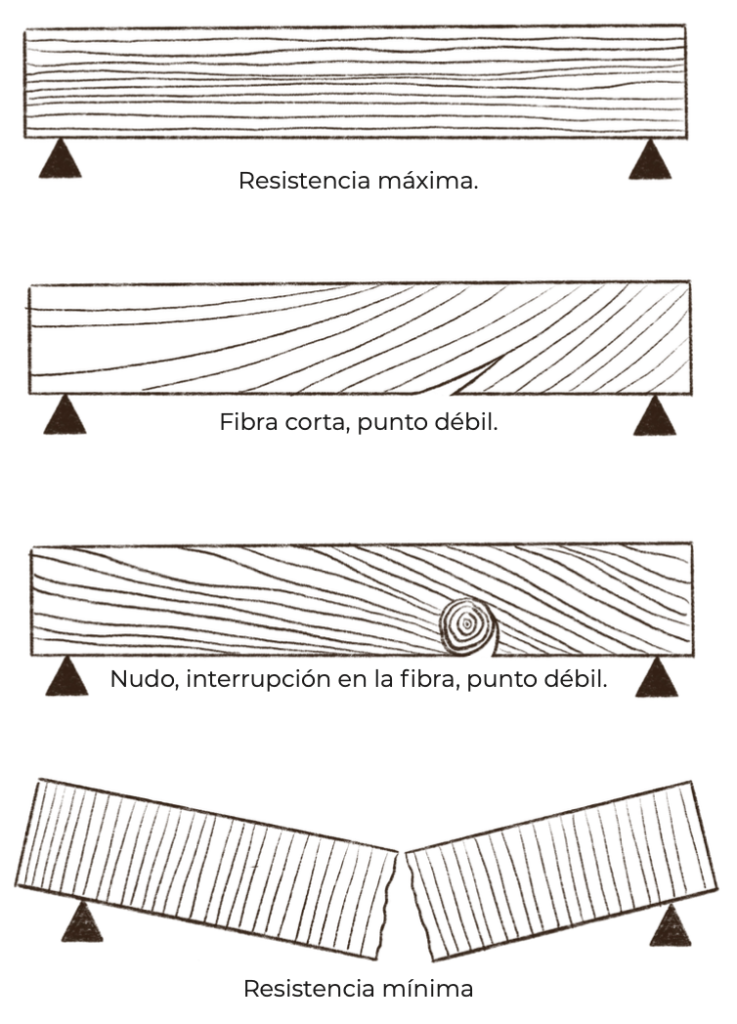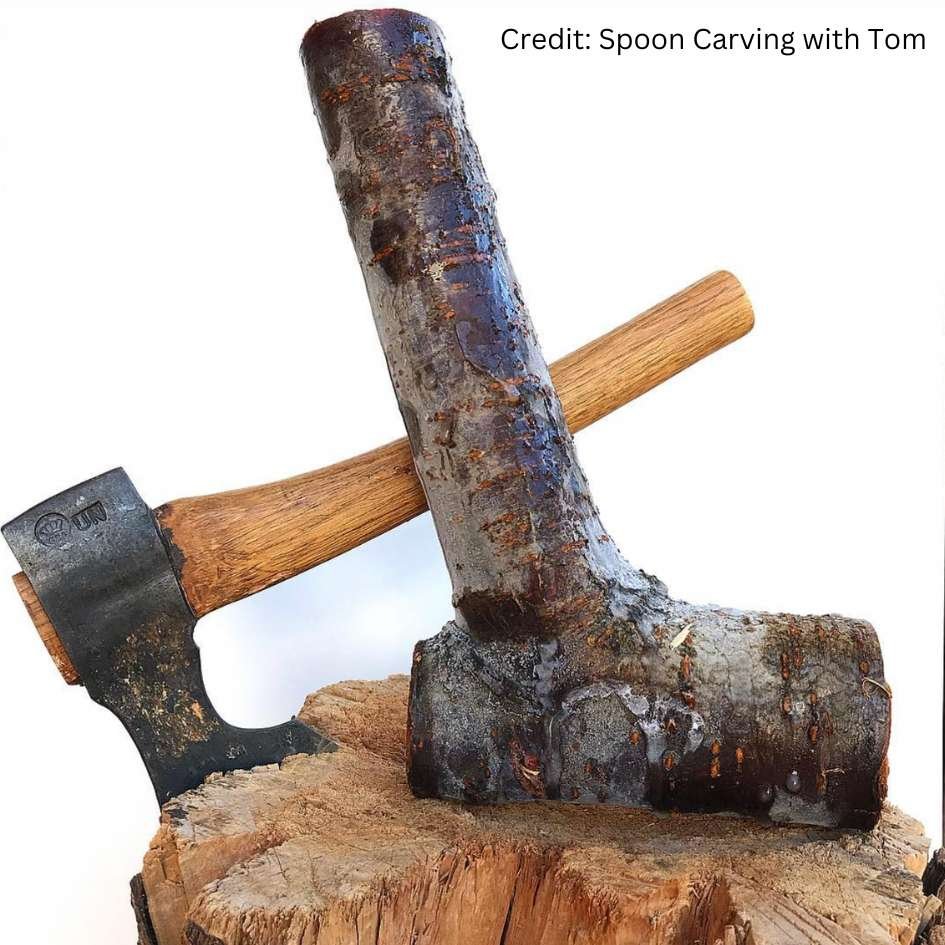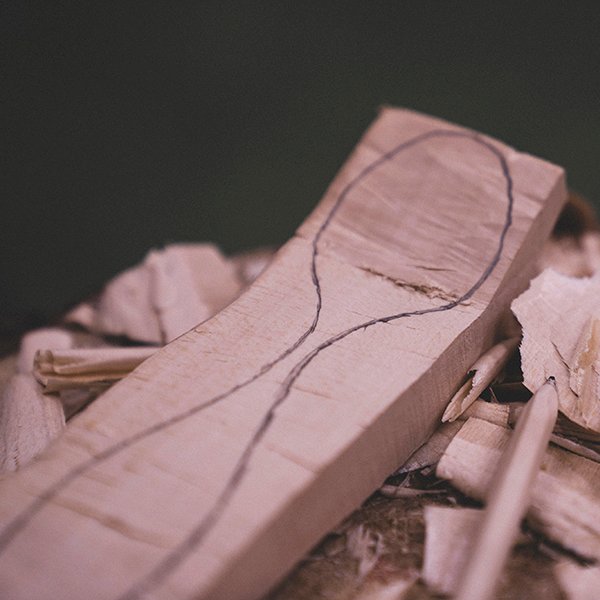The importance of understanding the grain direction
In this article I talk about the importance of understanding the grain direction to design and carve a wooden spoon that is as strong as possible.
A common feature in some types of spoons is the curvature or what is known as: The Crank.
For example, eating spoons have a slight crank to help them dip into the plate and scoop up food easily. Some more than others, like a ramen spoon or a ladle.
We can find flat spoons, such as cooking spoons.
Using the Natural Curves of Wood
As we had previously determined, the ideal wood for spoon carving is straight grain wood, so how do we get a curved profile spoon design or a cranked spoon without compromising the its strength?
The ideal scenario would be to use a branch that has already a natural curve to it, like this one:
In this way, there is continuity of the fibers along its section, which guarantees the greatest resistance of the material.
Understanding the grain, we can incorporate the natural shapes of trees and its fiber structure in our spoon designs.

The Relationship between Wood Fibers and Strength
Wood is strong along its fibers, so to get a piece of wood that is as strong as possible we must ensure that there is the greatest continuity of the fibers, as explained in the following illustration:

How to carve the crank from straight-grained wood
What if we want to carve a very cranky spoon like a Ladle? A ladle has a very pronounced crank, almost perpendicular, and to accomplish this we must use a part of the tree that allows us this type of shape. We can find this in a branch junction which has fibers in almost perpendicular directions.
In most cases we start from a straight grain piece of wood that we get out of a log. We must understand that there is a limit to the curvature or crank we can get from straight grain wood without creating weak spots of short grain like we can see in the next illustration:

In this video you will find a detailed explanation of how to carve the crank using the axe: Spoon Carving- Spoon “Crank” Explained

Conclusion
Understanding the wood grain we can not only create strong and lasting spoons but it will make the whole carving process much more easy and fluid.

